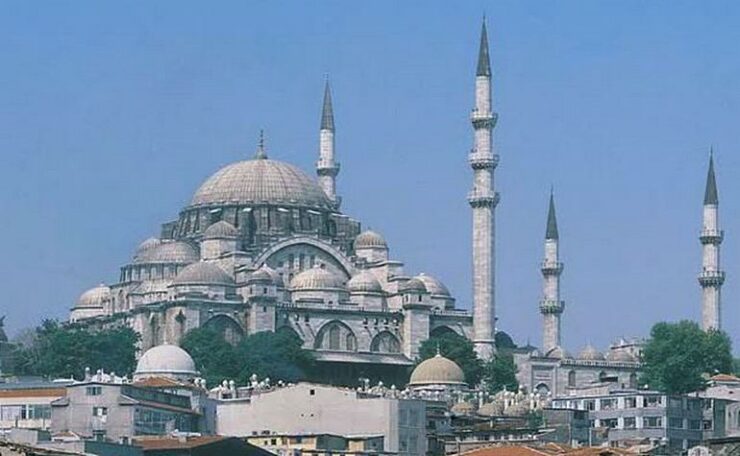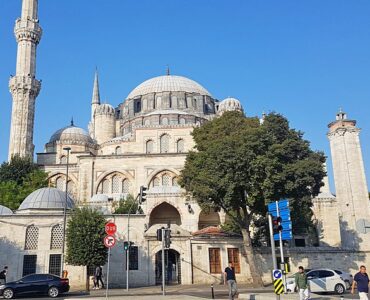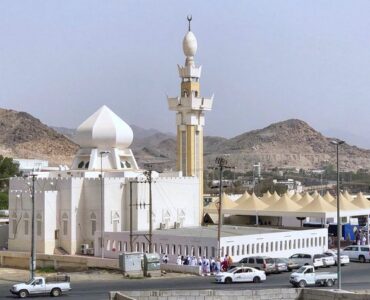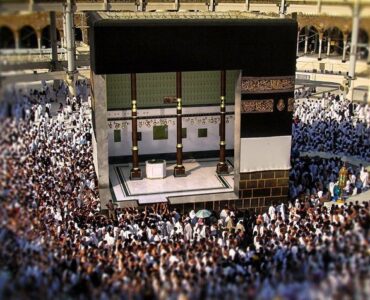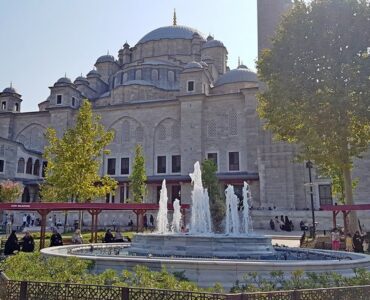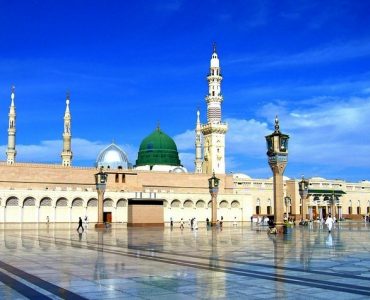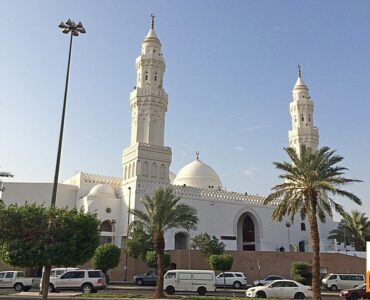The Suleymaniye Mosque is one of the largest mosques in Istanbul and regarded as its most important. It was built on the order of Sulayman the Magnificent by the great architect Sinan and both are buried within the complex. Construction work began in 1550 CE and was finished in 1558 CE.
History
- The complex stands on the grounds of the first palace built in the city by the conquering Ottomans. When in 1465 CE, the imperial entourage moved to the Topkapi Palace, the grounds of the old one was given over for construction of the new complex. Work on the Suleymaniye Mosque began in 1550 CE and was finished in 1558 CE. During this time, Sinan and his family lived on site.
- Like the city’s other imperial mosques, the Suleymaniye Mosque was not only a place of worship, but also a charitable foundation, or kulliye. The mosque is surrounded by its former hospital, soup kitchen, schools, caravanserai (resting place for travellers) and bath house. This complex provided a welfare system which fed over 1,000 of the city’s poor – Muslims, Christians and Jews alike – every day. The size of the millstone in its courtyard gives an idea of the amount of grain that was needed to feed everyone.
Exterior
- As with all imperial mosques in Istanbul, the entrance to the mosque contains a forecourt with a central fountain. The exterior facade of the mosque is decorated with rectangular blue coloured Iznik tile window lunettes.
- To the south of the mosque is a madressa housing a library containing 110,000 manuscripts. The main courtyard entrance contained the rooms of the mosque astronomer who determined the times of prayer.
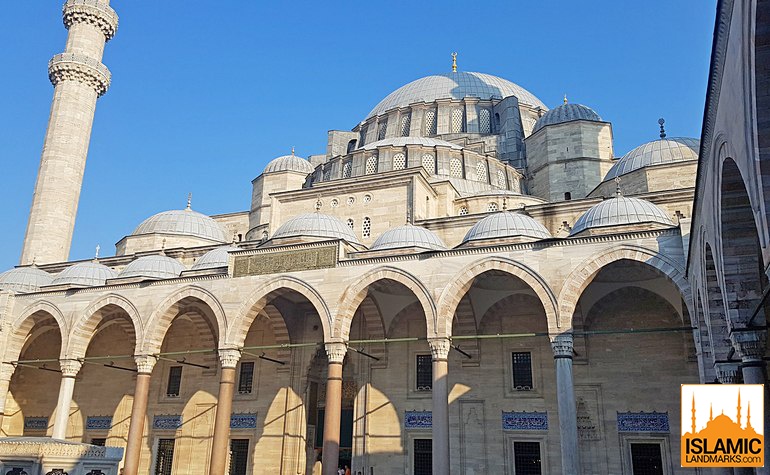

- A minaret stands on each of the four corners of the courtyard, two tall and two short. Traditionally, four minarets were used for mosques that were endowed by a sultan. Princes and princesses could construct two minarets; others only one. In total, the minarets have ten galleries (small balconies), which by tradition indicates that Sulayman I was the 10th Ottoman sultan. The main dome is 53 meters high.
- The Suleymaniye Mosque was ravaged by a fire in 1660 and was restored by Sultan Mehmed IV. Part of the dome collapsed again during the earthquake of 1766. Subsequent repairs damaged what was left of the original decoration of Sinan. Recent cleaning has shown that Sinan experimented first with blue, before turning red the dominant colour of the dome.
- During World War I the courtyard was used as a weapons depot, and when some of the ammunition ignited, the mosque suffered another fire. Not until 1956 was it fully restored again.
Interior
- The interior of the mosque is a vast, almost square space, being 59 metres in length and 58 metres in width.
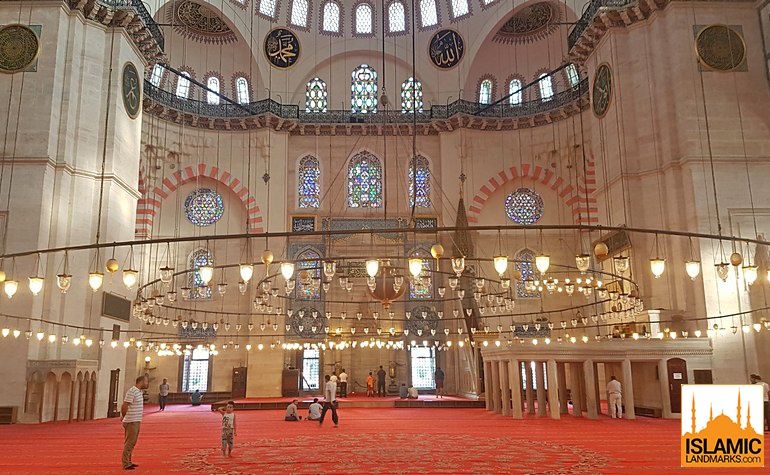

- There are stained glass windows and blue, Iznik tilework on the qiblah wall. On either side of the mihrab are large calligraphy tiles with text from Surah al-Fatiha, the beginning chapter of the Quran.
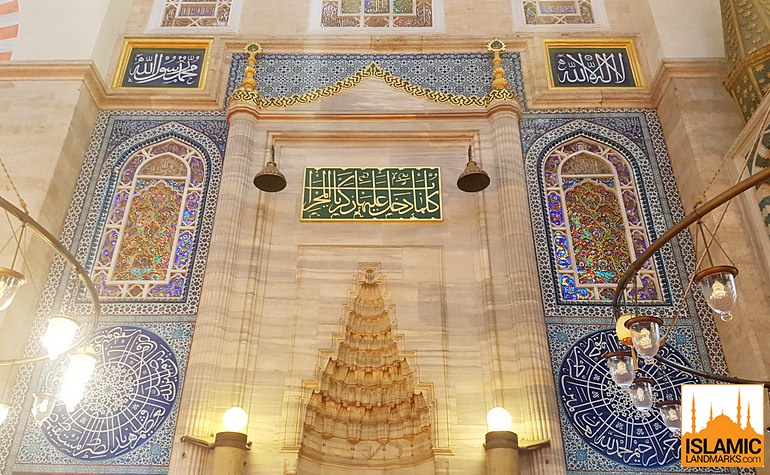

- The interior always feels cool, partly because a clever air-flow system was incorporated into the original design to direct soot from the candles and oil lamps to a single point. It was then collected and used for ink.
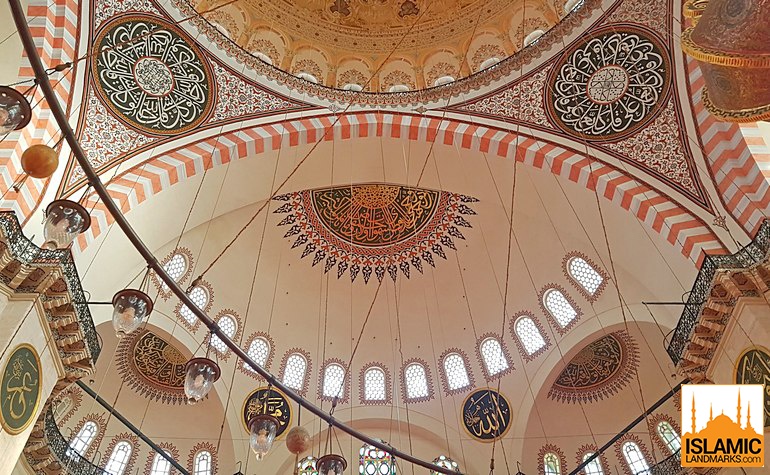

Mausoleums
- In the garden behind the main mosque there are two mausoleums including the tombs of Sultan Sulayman I, his wife Roxelana, his daughter Mihrimah, his mother Dilaşub Saliha and his sister Asiye. The sultans Sulayman II and Ahmed II, are also buried here.
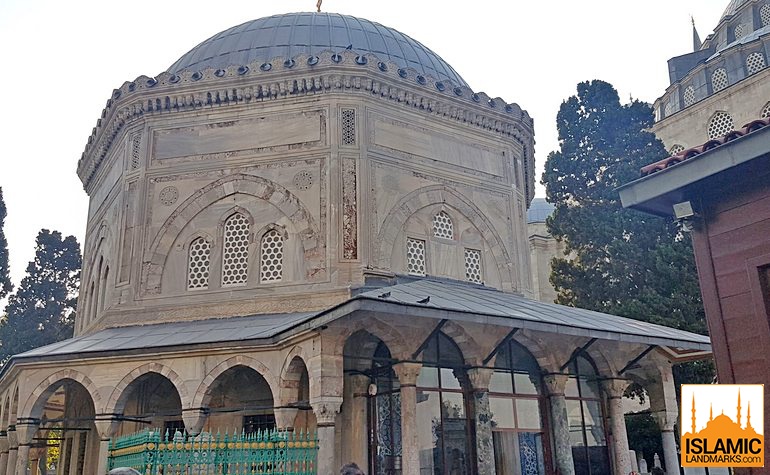

- Embedded within the main mausoleum is said to be a piece of the Hajar al-Aswad. This is a part of the Black Stone attached to the Ka’bah in Makkah, the holiest place in Islam.
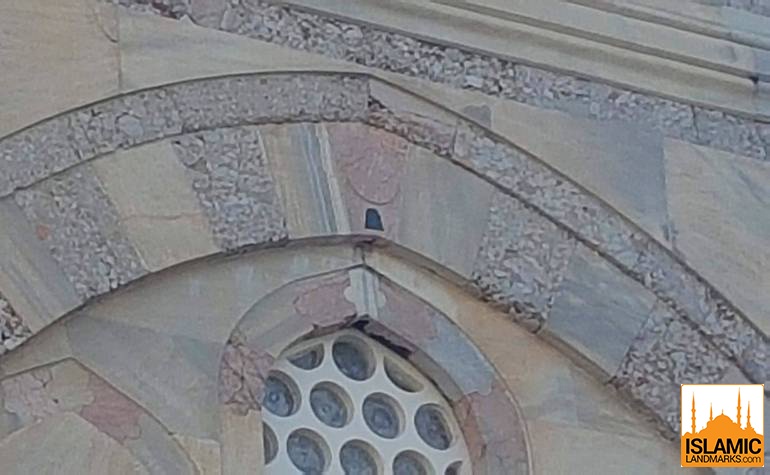

Tomb of Sinan
- Just outside the mosque walls, to the north is the tomb of Sinan, considered the greatest architect of the classical period of Ottoman architecture. Sinan died aged 98, having built 131 mosques and 200 other buildings. He was born a Christian and later converted to Islam.
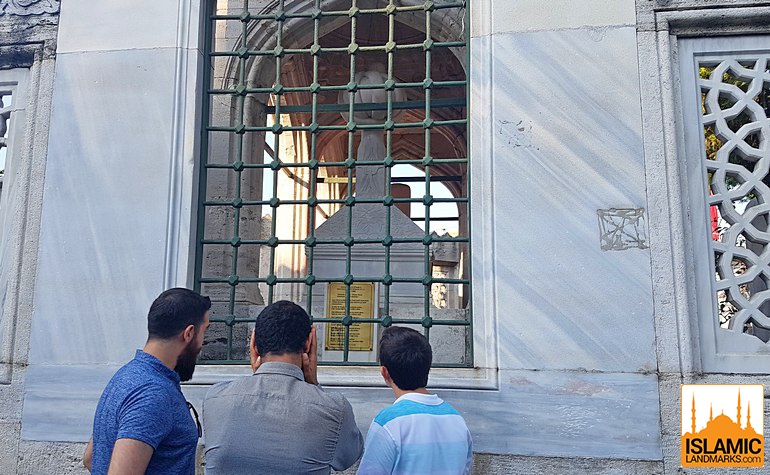

- Video of the Suleymaniye mosque:
References: Wikipedia, Istanbul – DK Eyewitness Travel, The Rough Guide to Istanbul

